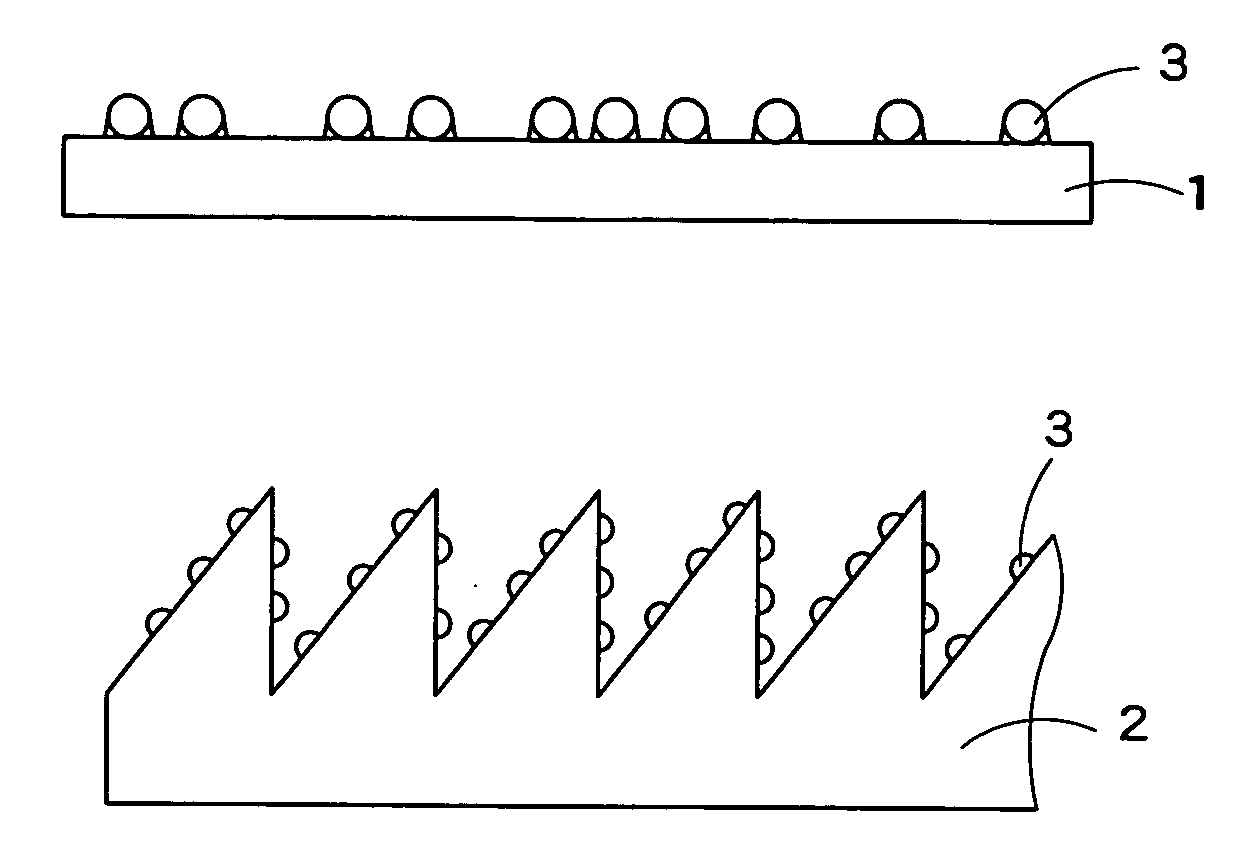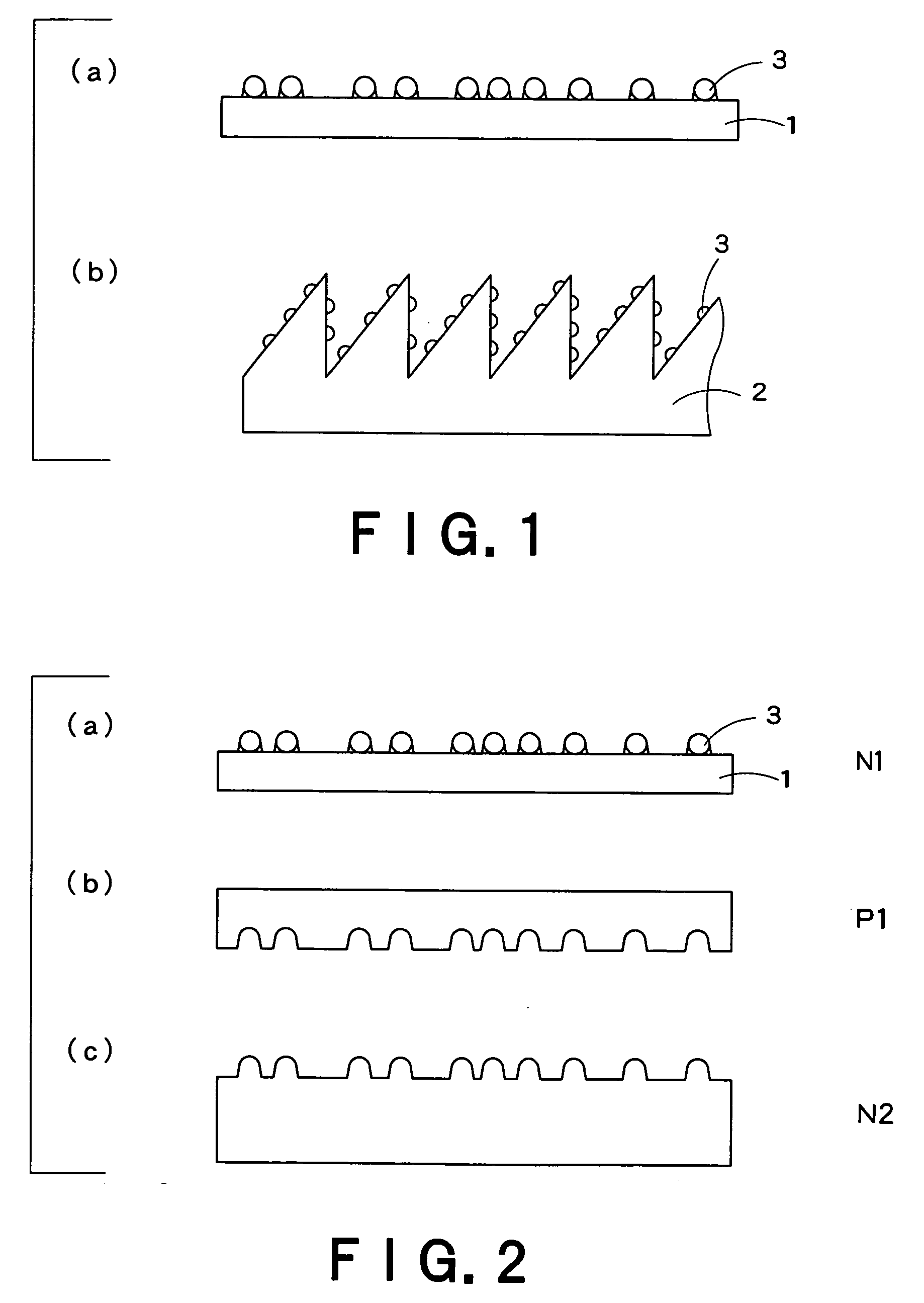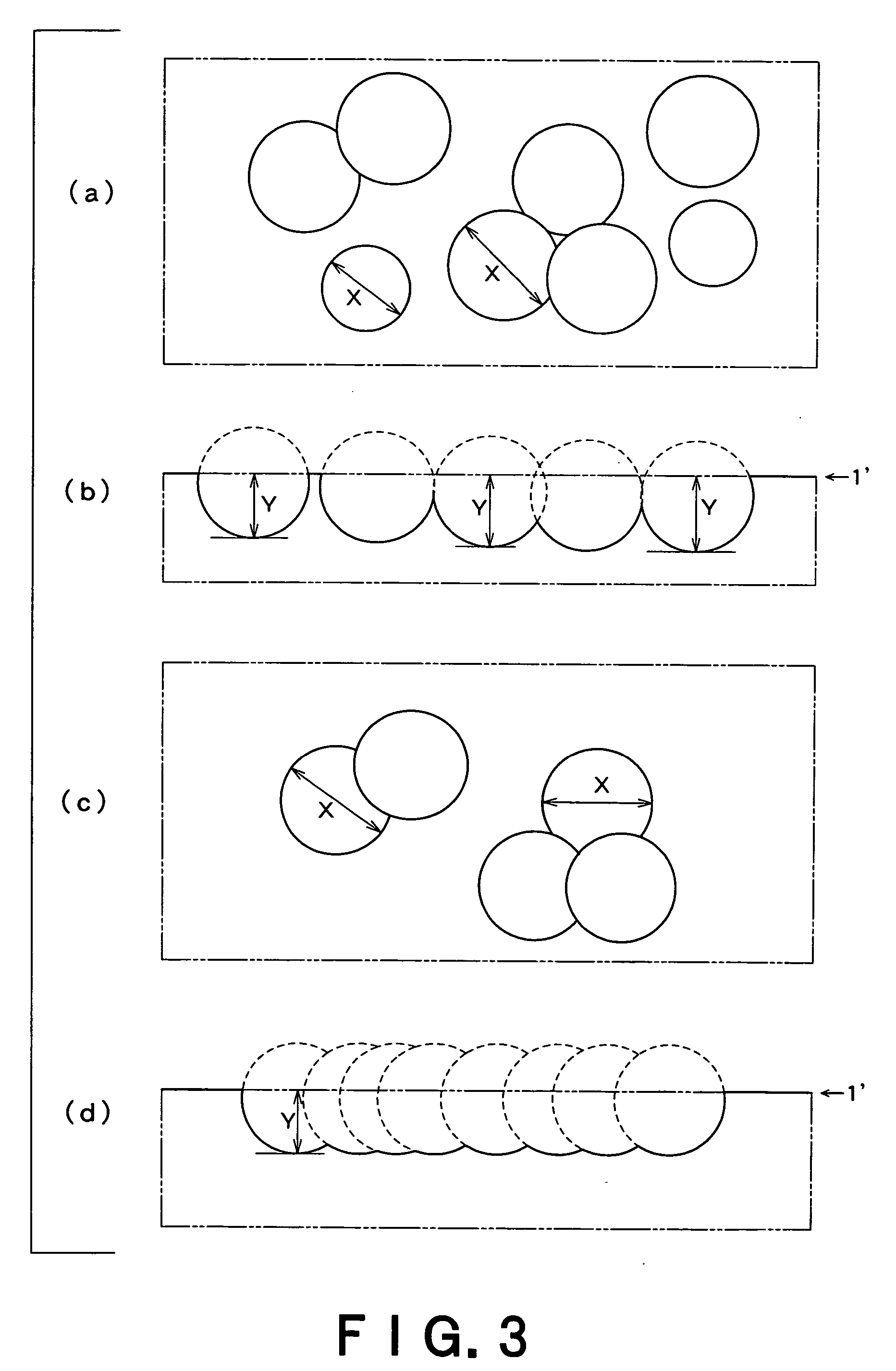Antireflection structure and optical material comprising the same
a technology of anti-reflection structure and optical material, which is applied in the direction of mirrors, instruments, coatings, etc., can solve the problems of disadvantageous application of inability to form predetermined convexes and concaves on the surface of optical material and mass production, and inability to apply the above coating method to optical members disadvantageously, etc., to achieve the effect of effective prevention of light reflection, improved light utilization efficiency, and improved visibility
- Summary
- Abstract
- Description
- Claims
- Application Information
AI Technical Summary
Benefits of technology
Problems solved by technology
Method used
Image
Examples
example a1
(Preparation of Mold Having Fine Convexes on its Surface (Hereinafter Referred to as “Fine Convex Mold”))
[0185] A 0.4% aqueous polydiallyldimethylammonium salt (product name: PDDA, manufactured by Aldrich) solution containing 0.1 M concentration of sodium chloride and a 0.4% aqueous polystyrenesulfonate (product name: PSS, manufactured by Aldrich) solution containing 0.1 M concentration of sodium chloride were provided.
[0186] A cleaned glass substrate having a size of 5 cm square was immersed in a PDDA solution for 2 min and was thoroughly cleaned, and a PDDA adsorption layer was then formed on the surface of the thoroughly cleaned glass substrate. This substrate was immersed in a PSS solution for 2 min and was then thoroughly washed to form a composite film comprising a PDDA layer and a PSS layer stacked in that order on the surface of the glass substrate (“PDDA / PSS composite film”). This work was repeated 6 cycles, and, finally, a PDDA adsorption layer was provided, whereby a c...
example a2
[0194] (Preparation of Fine Convex Mold)
[0195] A fine convex mold was prepared in the same manner as in Example A1, except that the solid content of the polymer emulsion was regulated to 16%.
[0196] (Evaluation of Fine Convex Mold)
[0197] The measurement of transmittance showed that the fine convex mold had antireflection properties. The mold was observed under a scanning electron microscope. As a result, it was confirmed that the convexes formed of fine particles were randomly distributed at a density of 1689 / 100 μm2, the maximum value, minimum value, and average value of diameters of the convexes were 163 nm, 82 nm, and 140 nm, respectively, and at least 10% of the convexes were provided independently of each other. The maximum value, minimum value, and average value of the height of the convexes were 118 nm, 67 nm, and 99 nm, respectively. Likewise, the cross-section was observed. As a result, it was confirmed that the skirt part of the convexes was in a taper form. The average ...
example a3
[0204] (Preparation of Fine Convex Mold)
[0205] A fine convex mold having an antireflection structure was prepared in the same manner as in Example A1, except that a silica fine particle dispersion liquid (tradename: SPHERICA-SLURRY 120, manufactured by Catalysts and Chemicals Industries Co., Ltd.) having a solid content regulated to 18% was used instead of JSR 0693 having a solid content regulated to 24%.
[0206] (Evaluation of Fine Convex Mold)
[0207] The measurement of transmittance showed that the fine convex mold had antireflection properties. The mold was observed under a scanning electron microscope. As a result, it was confirmed that the basic forms of the convexes formed of fine particles were randomly distributed at a density of 1822 / 100 μm2, the maximum value, minimum value, and average value of diameters of the convexes were 143 nm, 80 nm, and 130 nm, respectively, and at least 10% of the basic forms of the convexes were provided independently of each other. The maximum v...
PUM
| Property | Measurement | Unit |
|---|---|---|
| diameter | aaaaa | aaaaa |
| diameter | aaaaa | aaaaa |
| diameter | aaaaa | aaaaa |
Abstract
Description
Claims
Application Information
 Login to View More
Login to View More - R&D
- Intellectual Property
- Life Sciences
- Materials
- Tech Scout
- Unparalleled Data Quality
- Higher Quality Content
- 60% Fewer Hallucinations
Browse by: Latest US Patents, China's latest patents, Technical Efficacy Thesaurus, Application Domain, Technology Topic, Popular Technical Reports.
© 2025 PatSnap. All rights reserved.Legal|Privacy policy|Modern Slavery Act Transparency Statement|Sitemap|About US| Contact US: help@patsnap.com



